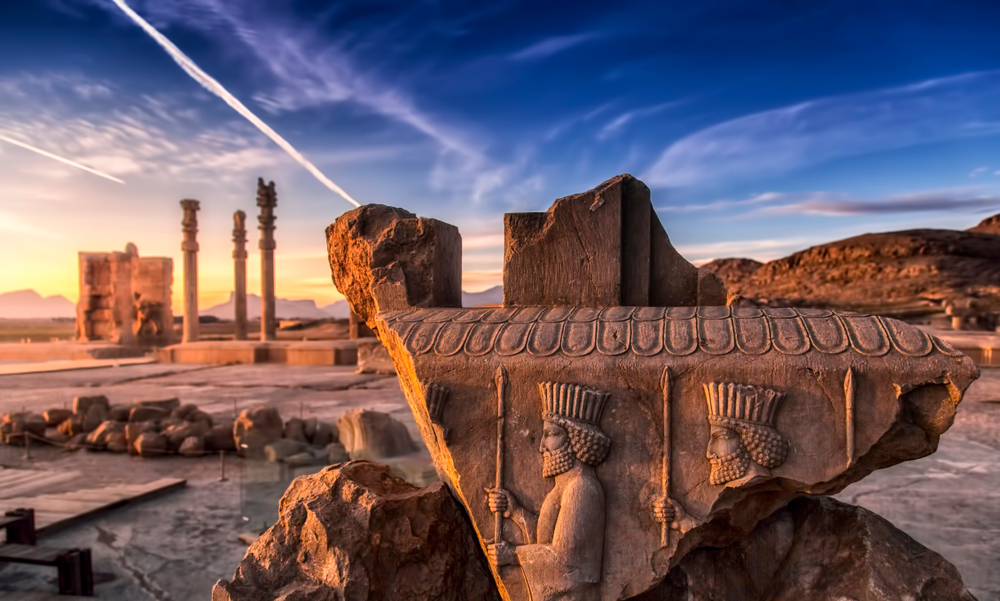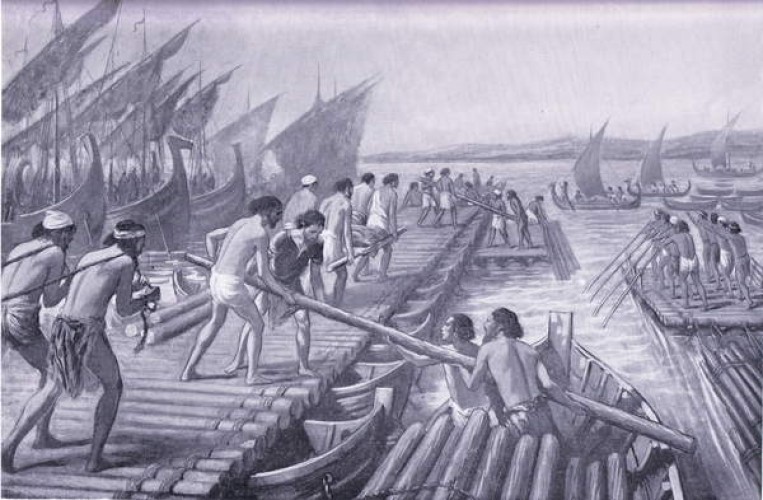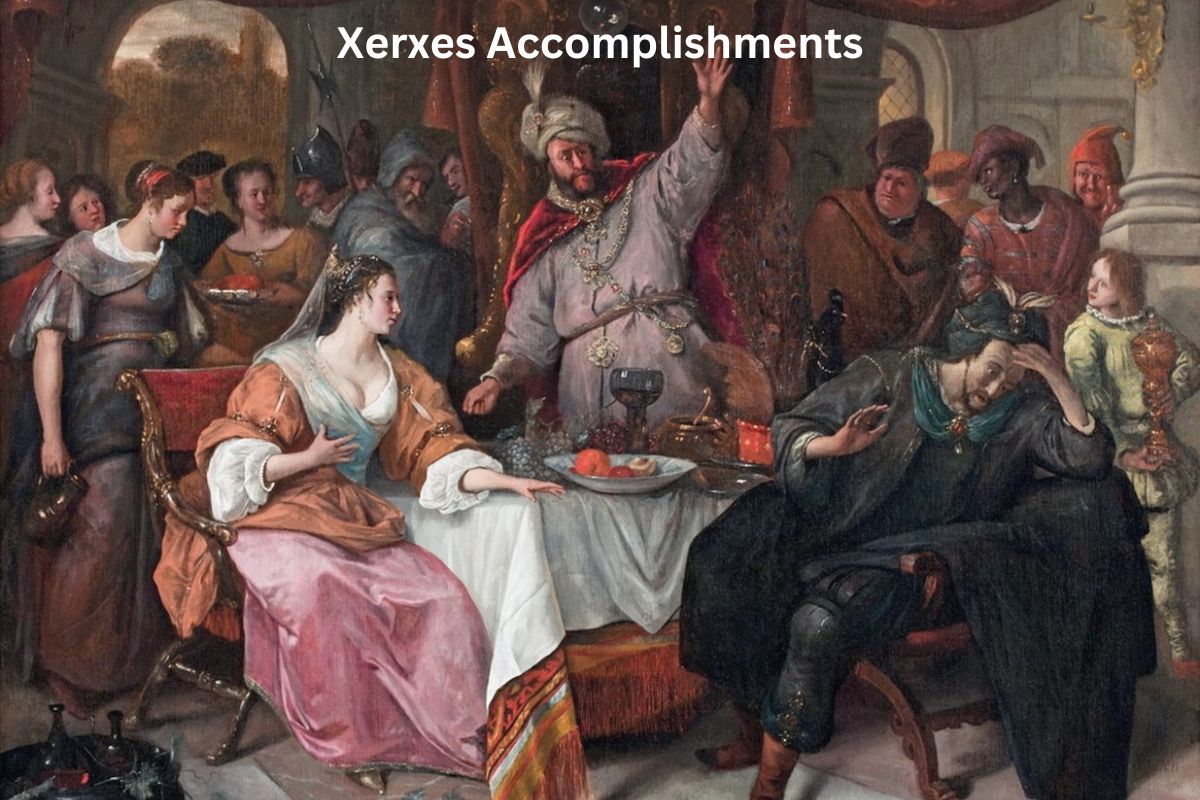Xerxes I, often referred to as Xerxes the Great, was the fourth king of the Persian Achaemenid Empire, ruling from 486 BC to 465 BC.
He left a notable mark on history through his accomplishments, which ranged from the expansion of the empire and construction of grand architectural marvels to military campaigns and administrative reforms.
In this overview, we’ll delve into some of the key achievements and contributions of Xerxes during his reign.
Accomplishments of Xerxes
1. Expansion of the Persian Empire
Xerxes I continued the Persian tradition of territorial expansion initiated by his predecessors. He consolidated Persian control over Egypt by quelling revolts and securing the region as a valuable part of the empire.
Also Read: Facts About Xerxes
Additionally, he aimed to further expand into Greece, which led to the famous Greco-Persian Wars, including the Battle of Thermopylae and the Battle of Salamis.

2. Construction of Persepolis
Xerxes I is most renowned for commissioning the construction of Persepolis, a grand and opulent city located in modern-day Iran. This city served as the ceremonial capital of the Achaemenid Empire. The construction of Persepolis began around 518 BC and continued under Xerxes’ rule.
The city featured stunning architecture, including the Apadana Palace, the Gate of All Nations, and numerous intricately decorated columns, staircases, and reliefs. Persepolis became a symbol of the Achaemenid Empire’s power and opulence.
3. Building infrastructure, including the Xerxes Canal
Xerxes I recognized the importance of infrastructure in maintaining and expanding his empire. In Egypt, he ordered the construction of a canal connecting the Nile River to the Red Sea, known as the “Xerxes Canal” or the “Canal of the Pharaohs.”
This canal eased trade and navigation, allowing for the efficient movement of goods and troops, and contributed to the prosperity of the region. In addition to canals, Xerxes invested in the construction of roads and bridges, which facilitated communication and transportation within the vast Persian Empire.
These infrastructure projects showcased his commitment to improving the empire’s connectivity and logistics.
4. Leading military campaigns
Xerxes I was a capable military leader who conducted several significant military campaigns during his reign. His most famous campaign was the invasion of Greece in 480 BC, a part of the Greco-Persian Wars. Xerxes personally led a massive Persian army into Greece, intending to conquer the Greek city-states.
Although the campaign faced both successes and failures, such as the famous Battle of Thermopylae and the naval Battle of Salamis, it demonstrated Xerxes’ determination and his ability to command a vast military force.

5. Reorganizing and expanding the Persian army
Xerxes made substantial reforms to the Persian military, expanding its size and improving its organization. He continued the practice of conscripting soldiers from various regions of the empire, which created a diverse and formidable army.
His forces included infantry, cavalry, archers, and naval units. Xerxes equipped his army with advanced weaponry and standardized training, making it one of the most potent military forces of its time.
6. Establishing the Royal Road
Xerxes expanded and maintained the Royal Road, an ancient highway that stretched across the Persian Empire, connecting the capitals of Susa and Sardis. This extensive road system played a vital role in facilitating communication, trade, and the movement of troops and officials within the empire.
Messengers on horseback could travel quickly along the Royal Road, ensuring the rapid transmission of information across the vast territories of the Achaemenid Empire. This infrastructure improvement greatly contributed to the administrative efficiency and unity of the empire.

7. Promoting cultural exchange
Xerxes I ruled over a diverse and multicultural empire that spanned a vast geographical area. To maintain cohesion and unity within the empire, he encouraged cultural exchange and the coexistence of various languages, traditions, and religious beliefs.
This policy of tolerance helped to minimize internal conflicts and fostered a sense of belonging among the diverse populations under Persian rule.
8. Patronage of the arts
Xerxes was a patron of the arts and supported the creation of sculptures, inscriptions, and other works of art that celebrated Persian achievements and his own reign.
These artistic endeavors often featured elaborate carvings and reliefs that adorned palaces and public buildings, serving as both decoration and propaganda, promoting the glory and might of the Persian Empire.
9. Implementing administrative reforms
Xerxes I recognized the need for efficient governance to manage the vast Persian Empire. He implemented administrative reforms to improve the organization of the empire’s provinces.
He divided the empire into smaller administrative units, each governed by a satrap (provincial governor) who reported directly to the central government. This system allowed for better control and taxation, ensuring the flow of resources to the imperial capital.
10. Accumulating wealth and tribute for the empire
Xerxes I presided over a period of considerable wealth accumulation for the Persian Empire. Through a combination of tribute from conquered territories, taxation, and the exploitation of natural resources, the empire amassed immense wealth during his reign.
This wealth funded his ambitious projects, military campaigns, and the maintenance of a powerful standing army. It also contributed to the prosperity and stability of the Achaemenid Empire for years to come.
